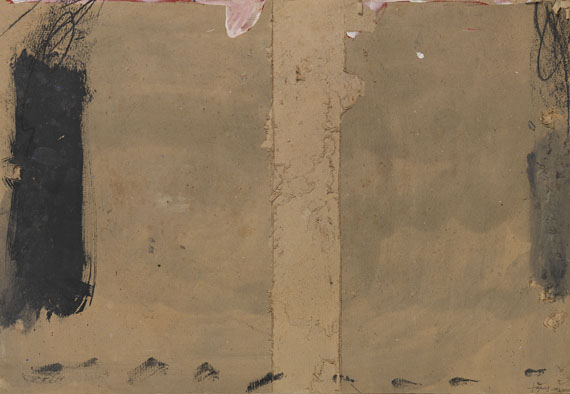234
Antoni Tàpies
Black Scrawls, 1961.
Gouache
Stima:
€ 20,000 / $ 22,600 Risultato:
€ 39,040 / $ 44,115 ( commissione inclusa)
Black Scrawls. 1961/62.
Gouache and charcoal on reliefed board.
Agustí 1000. Signed and dated "1962" lower right. 52 x 74,5 cm (20,4 x 29,3 in), the full sheet.
PROVENANCE: Collection Bernhard Minetti, Berlin.
Private collection Northern Germany.
Gouache and charcoal on reliefed board.
Agustí 1000. Signed and dated "1962" lower right. 52 x 74,5 cm (20,4 x 29,3 in), the full sheet.
PROVENANCE: Collection Bernhard Minetti, Berlin.
Private collection Northern Germany.
234
Antoni Tàpies
Black Scrawls, 1961.
Gouache
Stima:
€ 20,000 / $ 22,600 Risultato:
€ 39,040 / $ 44,115 ( commissione inclusa)




 Lot 234
Lot 234 